10 times volcanoes blew our minds in 2021
This year, there were major eruptions, peculiar clouds, an "ice volcano" and more.
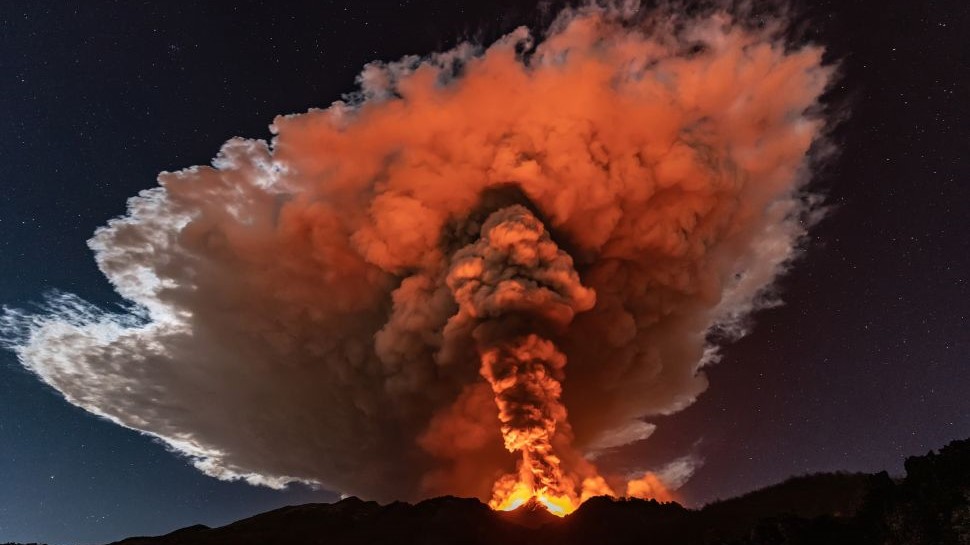
Volcanoes are one of the most extreme examples of Earth's raw power, eliciting fear and wonder at the same time. Every year, we are surprised by the ferocity, uniqueness and unpredictability of volcanoes, and 2021 was no different. Here are 10 times volcanoes blew our minds in 2021.
Stunning Etna eruption
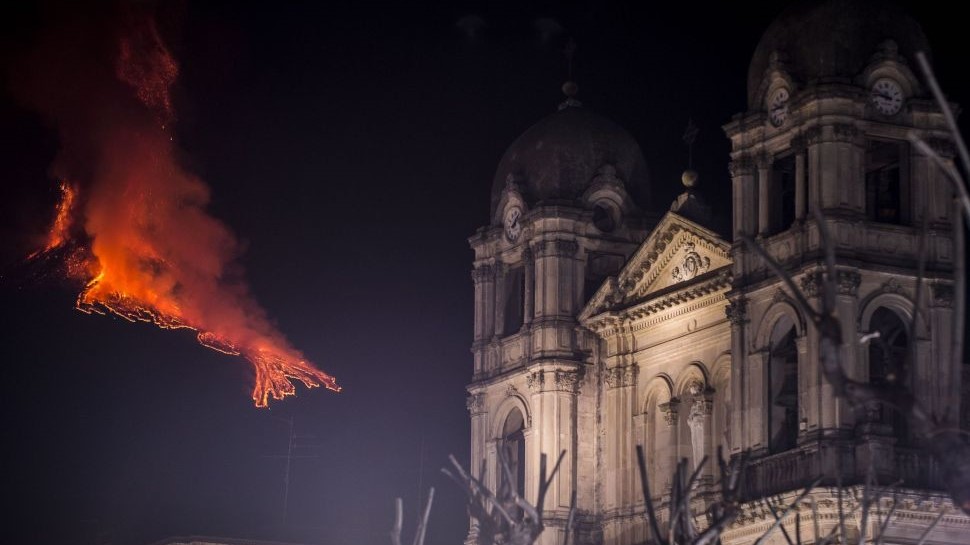
Mount Etna is the most active volcano in Europe, so it's not surprising that it erupted again in 2021. But when it blew its top in February, photographers caught some stunning images of lava spewing from the summit.
In one particularly impressive image (shown above), oozing tendrils of magma spread across the night sky behind a church. This clever image is an example of forced perspective: The church is actually more than 15 miles (25 kilometers) from the volcano crater, but it looks as if the luminous lava were merely hundreds of feet in the background.
Luckily, there were no injuries or serious damage during the eruption. Mount Etna has continued to be unusually active this year and has erupted at least 50 times since February, according to Live Science's sister site Space.com.
Read more: Oozing tendrils of lava spew from Mount Etna in spectacular nighttime photos
Daring drone in Iceland
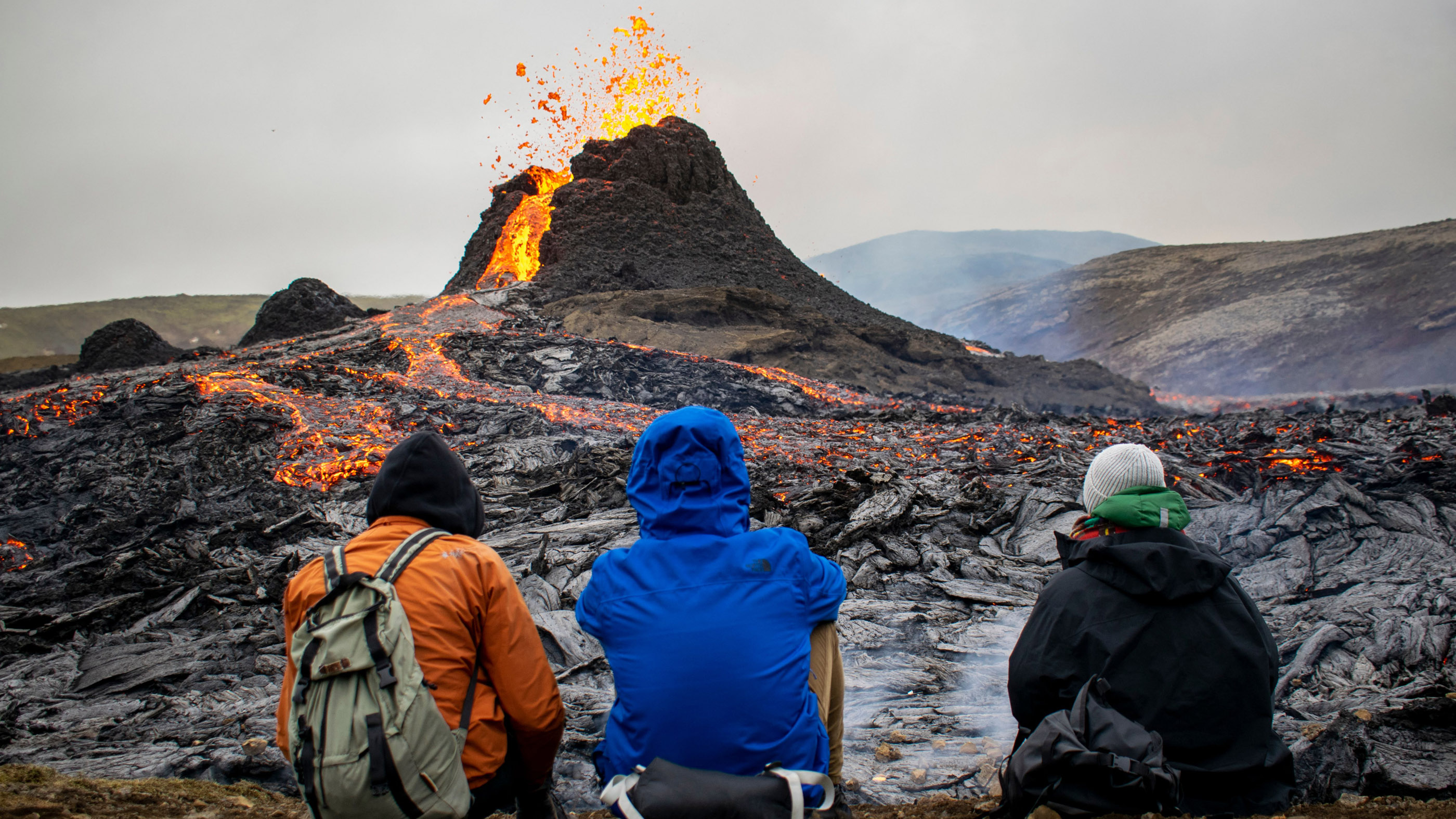
In March, Fagradalsfjall volcano in Iceland, about 25 miles (40 kms) southwest of Reykjavik, spectacularly erupted for the first time in more than 900 years, and volcano enthusiasts flocked to the site, including one daring visitor who flew a drone directly into the fiery cone.
In a short video captured by the drone, the pilot follows a lazy river of bright-orange magma before making a daring dive through bubbling lava cauldron at the summit of a small cone.
The eruption was preceded by a swarm of more than 20,000 earthquakes, Live Science reported at the time. However, as with most eruptions in Iceland, local people faced limited risk because it was an effusive eruption, in which lava seeps out of the ground at a steady rate rather than building up and exploding outward.
Read more: Drone footage reveals dramatic Iceland volcanic eruption
Volcanic glass at Kilauea

In September, Kilauea volcano on Hawaii's Big Island began erupting from the Halema'uma'u crater, a small vent near the much larger Kilauea caldera. Several pilots flying aircraft near the eruption reported seeing a rare type of volcanic glass known as Pele's hair.
Pele's hair consists of golden, sharp strands of glass that form when gas bubbles within lava burst at the surface. The rare phenomenon is named after Pele, the Hawaiian goddess of fire and volcanoes.
"The skin of the bursting bubbles flies out, and some of the skin becomes stretched into these very long threads, sometime[s] as long as a couple of feet [more than half a meter] or so," Don Swanson, a research geologist at the Hawaiian Volcano Observatory, previously told Live Science.
The eruption at Kilauea was preceded by a swarm of more than 140 earthquakes in just 12 hours in August, Live Science reported at the time.
Read more: Lava eruption at Kilauea spews 'Pele's hair' volcanic glass into Hawaii's skies
La Cumbre Vieja

One of the biggest volcano stories of 2021 was the September eruption of La Cumbre Vieja volcano in La Palma, one of the Spanish Canary Islands. The activity grabbed headlines at the time because of a long-standing theory that an eruption on La Palma could cause a "mega-tsunami" that could impact the eastern coastline of the U.S., but experts quickly shut down that idea.
The eruption spewed magma into the surrounding region, destroying around 2,000 buildings and forcing the evacuation of more than 7,000 people, although there were no serious injuries or fatalities, according to the BBC. The La Palma eruption finally ended Dec. 13, after three months of continuous activity.
During that time, the volcano belched stunning lava flows that were captured from space, and one Spanish politician suggested bombing the volcano was the only viable way to stop the eruption. (In the past dynamite has been used to divert lava flows, but scientists say an explotion would not stop the eruption)
Read more: La Palma volcano spews lava hundreds of feet in the air, but don't expect a 'mega-tsunami'
Rare bull's-eye clouds
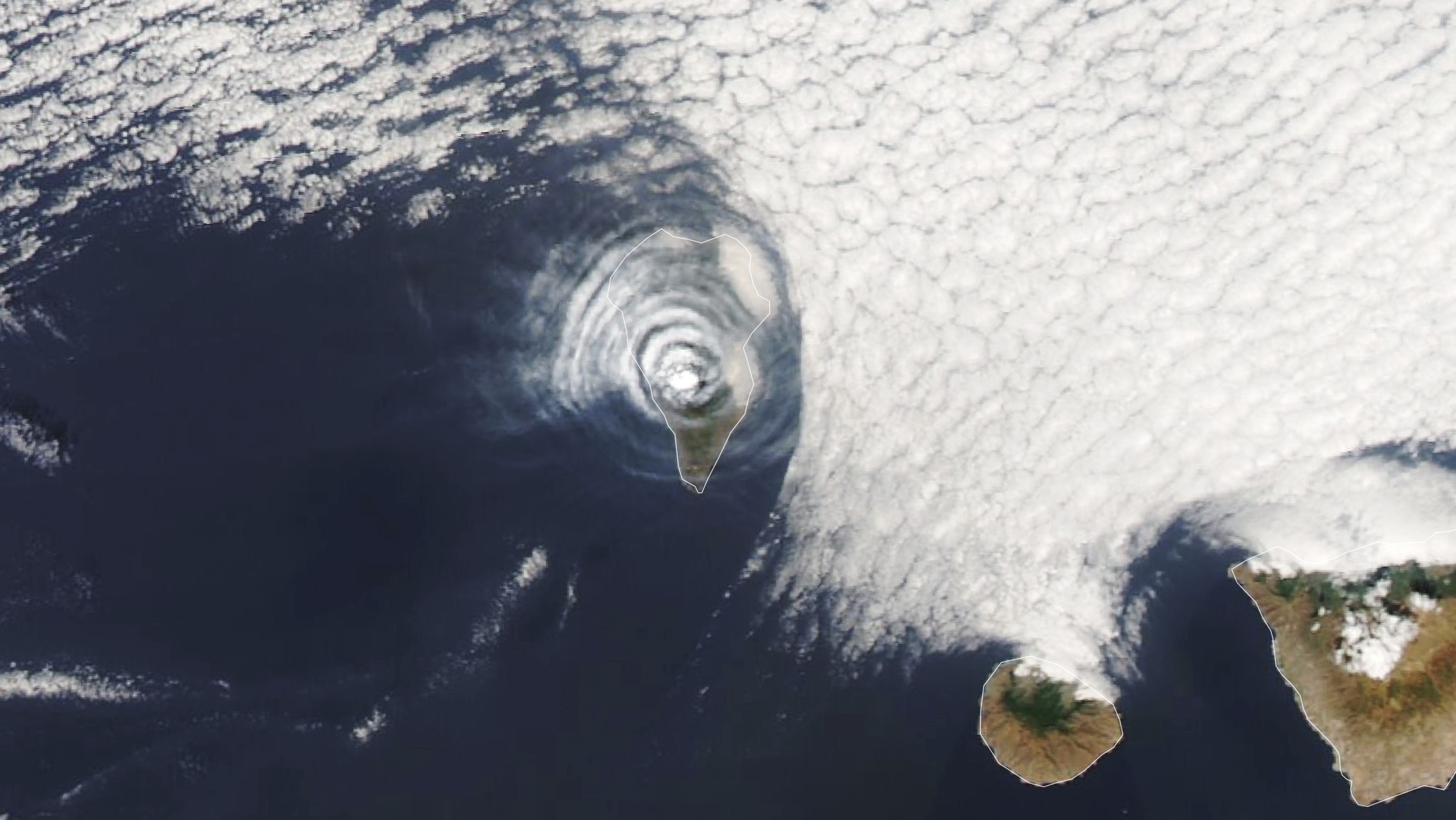
Another interesting consequence of the La Palma eruption was a rare bull's-eye-shaped cloud formation over La Cumbre Vieja that NASA's Aqua satellite spotted Oct. 1.
The bull's-eye clouds were a combination of the volcano's eruption plume — a mixture of ash, smoke, water vapor and other volcanic gases — and a rare atmospheric disturbance known as a temperature inversion. This condition occurs when a temporary layer of hot air forms in the lower atmosphere, which traps the eruption plume from the volcano, forcing it outward. The cloud rings form because of natural pulses of intensity during volcanic activity.
The official name for this type of concentric cloud formation is a gravity wave. However, the formation has nothing to do with gravity and is completely separate from the ripples in space-time called gravitational waves.
Read more: Striking bull's-eye-shaped clouds form above erupting La Palma volcano
Evacuations from Congo
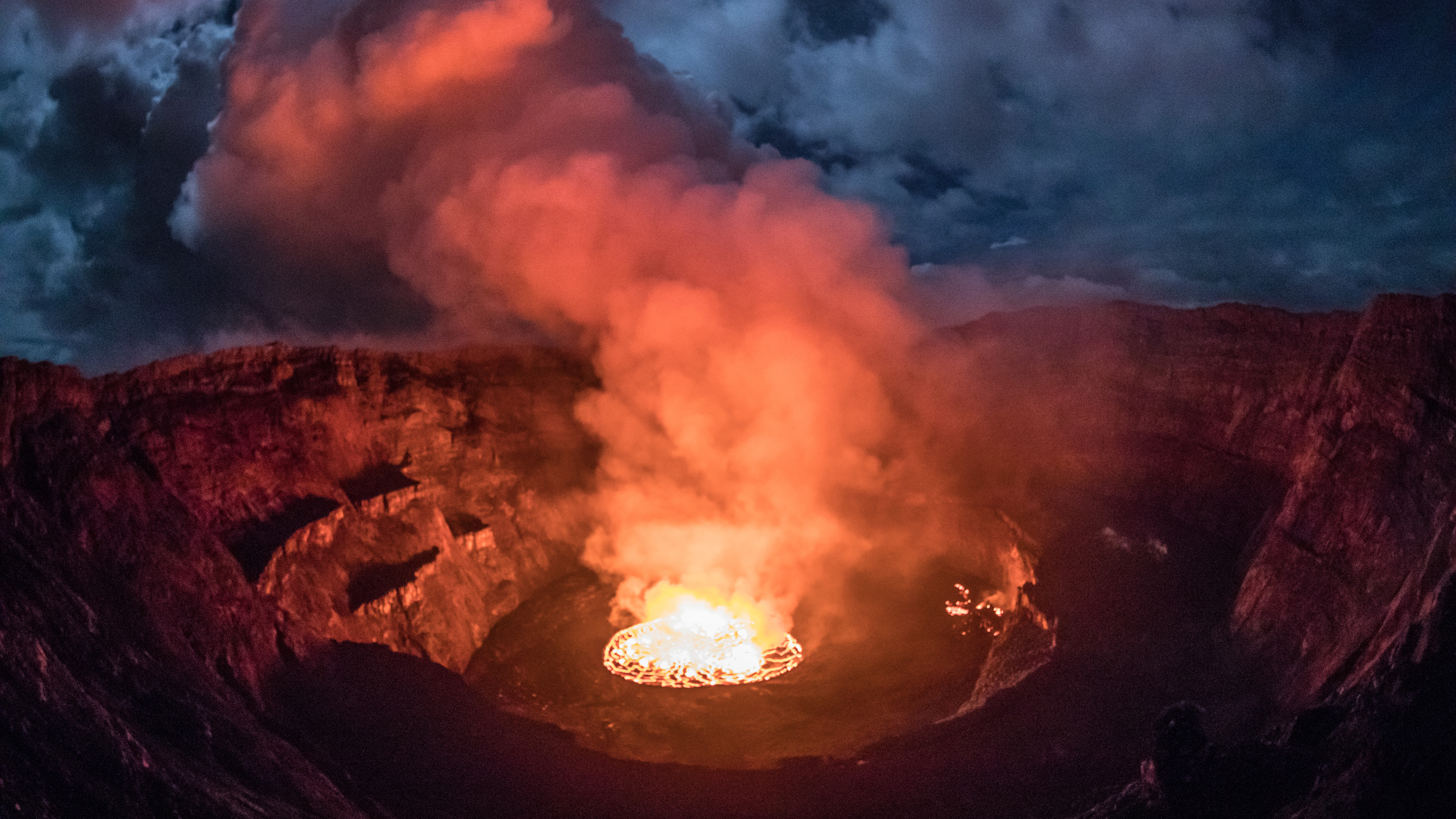
In May, Mount Nyiragongo in the Democratic Republic of the Congo erupted, sending thousands of people fleeing across the border into Rwanda and filling the skies with orange-red smoke.
The last time this volcano erupted, in January 2002, lava covered the nearby city of Goma and left up to 250 people dead and more than 100,000 without homes. In 1977, the volcano also blew its top, sending lava across Goma and killing 2,000 people.
In the most recent eruption, however, the lava flow stopped just short of Goma, and no one was injured. Despite being one of the most active volcanoes in the world, Mount Nyiragongo is no longer properly monitored; the World Bank cut funding to the Goma Volcano Observatory because of corruption allegations.
Read more: Congo's Mount Nyiragongo volcano blows its top, sending thousands fleeing across border
Simultaneous eruptions in Alaska
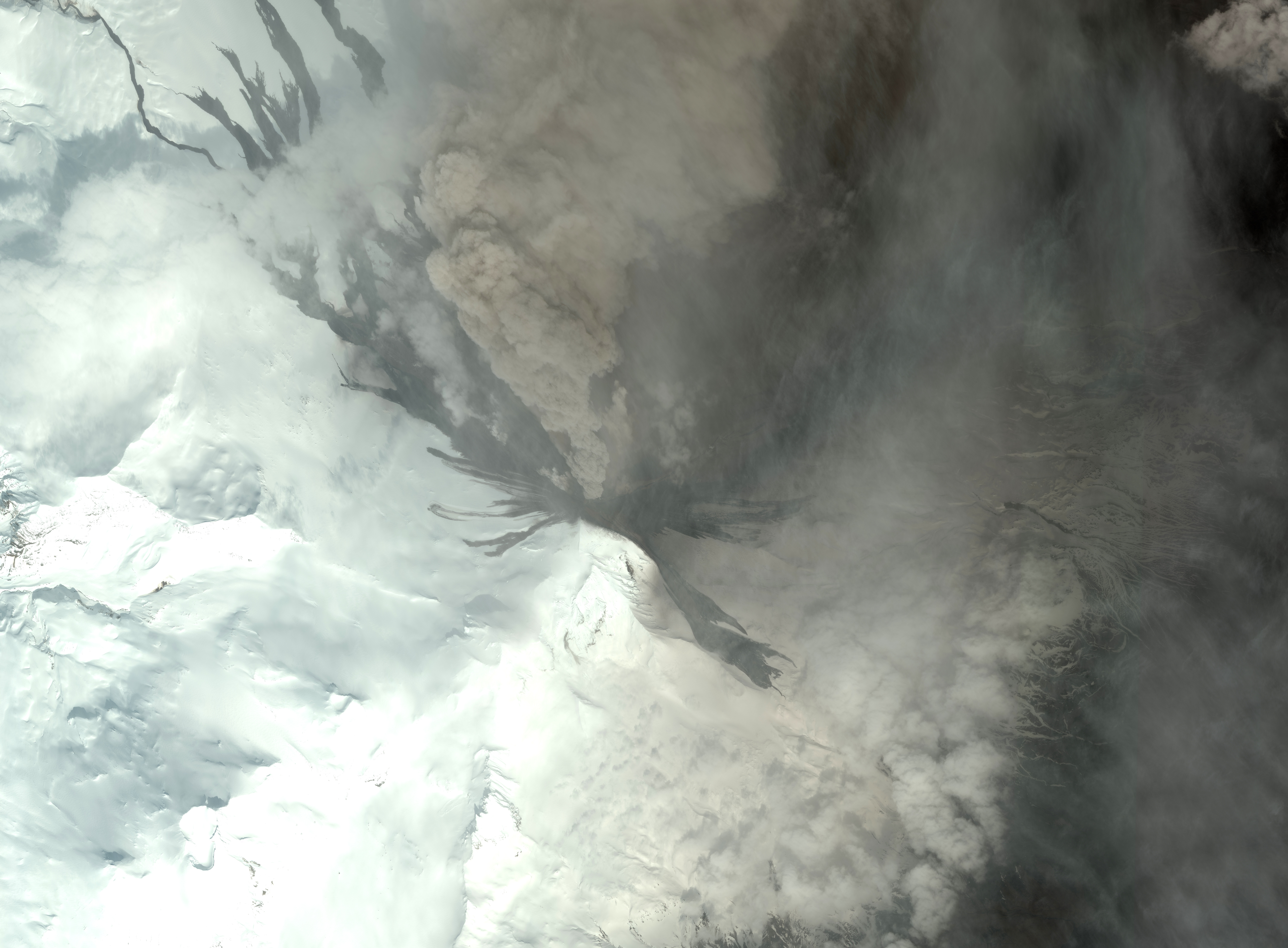
In August, three volcanoes in Alaska's Aleutian Islands — Pavlof, Great Sitkin and Semisopochnoi — began erupting simultaneously. The eruptions were not close to human populations and posed no risk to people.
Such a triple whammy is rare, but it's not unheard of. "Alaska has a lot of volcanoes, and we typically see maybe one eruption every year, on average," Matthew Loewen, a research geologist with the Alaska Volcano Observatory, told NBC News. "To have three erupting at once is less common, but it does happen."
The volcanoes are part of the so-called Aleutian Arc, a chain of volcanoes that sits on the boundary between two tectonic plates. The last time three volcanoes erupted simultaneously in Alaska was around seven years ago, according to Loewen.
Read more: Three volcanoes erupt at the same time in Alaska, in rare phenomenon
Intriguing "ice volcano"

In February, a rare "ice volcano" emerged in southeastern Kazakhstan. Instead of spewing lava and ash, however, this icy cone, which is not actually a volcano, spit out a light snow spray.
The ice volcano erupts with steam that freezes into tiny ice crystals as it leaves the structure. The buildup of frozen crystals allowed the structure to reach an impressive height of 45 feet (13.7 m). Visitors flocked to the ice pillar to take photos with the rare formation.
The term "ice volcano" is usually given to similar ice structures that can appear around the edges of large bodies of water, such as lakes, Live Science previously reported, but this version formed directly above a hot spring instead.
Read more: Spectacular 45-foot-tall 'ice volcano' appears in Kazakhstan
Skyscraper-size volcano on the seafloor

In August, scientists revealed a 2,690-foot-tall (820 m) underwater volcano in the western Indian Ocean, off Madagascar. The volcano, which is about 1.5 times the height of New York's One World Trade Center, was birthed after the largest active underwater eruption ever recorded.
The eruption, which occurred in 2018, followed a puzzling spate of earthquakes that struck near what is normally a seismically quiet area. Between May 2018 and May 2021, more than 11,000 detectable earthquakes shook the area. For context, only two earthquakes have been detected in the region since 1972.
The newly formed skyscraper-size volcano also sits on the deepest volcanic magma reservoir known to scientists, which extends about 34 miles (55 km) underground. Researchers also suspect similar eruptions have happened in the area in the past.
Read more: World's biggest underwater eruption birthed skyscraper-size volcano
"Eye of Sauron"
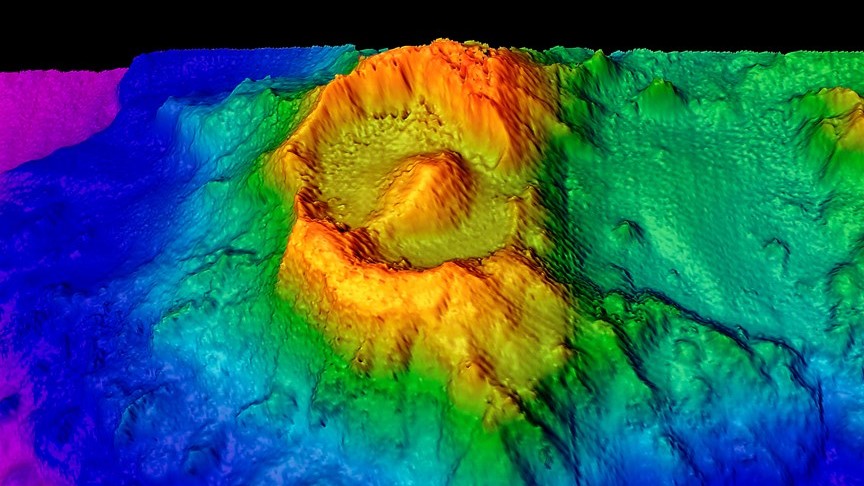
In July, researchers exploring the Indian Ocean discovered the remains of a collapsed underwater volcano with an uncanny resemblance to the all-seeing "Eye of Sauron" from J.R.R. Tolkien's famous fantasy series "The Lord of the Rings."
The eye is actually an oval-shaped depression measuring 3.9 miles (6.2 km) long by 3 miles (4.8 km) wide. Called a caldera, this giant divot is left over from the ancient collapse of a deep-sea volcano. The caldera is surrounded by a 984-foot-tall (300 m) rim, giving the impression of eyelids, and an equally tall cone-shaped peak at the center, which looks like a pupil.
The researchers suspect that the volcano remnant is around 100 million years old. They also discovered two seamounts (underwater mountains) nearby, which they named after famous places from the evil realm of Mordor in Middle-earth.
Read more: 'Eye of Sauron' volcano and other deep-sea structures discovered in underwater 'Mordor'
Originally published on Live Science.
Sign up for the Live Science daily newsletter now
Get the world’s most fascinating discoveries delivered straight to your inbox.

Harry is a U.K.-based senior staff writer at Live Science. He studied marine biology at the University of Exeter before training to become a journalist. He covers a wide range of topics including space exploration, planetary science, space weather, climate change, animal behavior and paleontology. His recent work on the solar maximum won "best space submission" at the 2024 Aerospace Media Awards and was shortlisted in the "top scoop" category at the NCTJ Awards for Excellence in 2023. He also writes Live Science's weekly Earth from space series.










